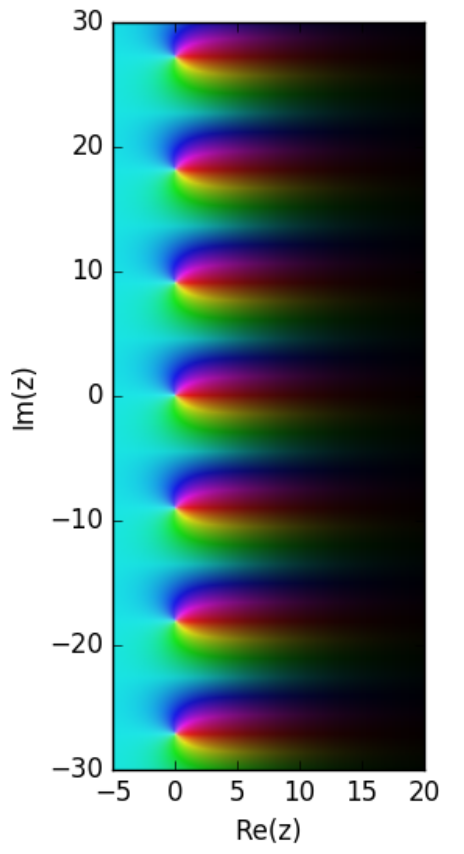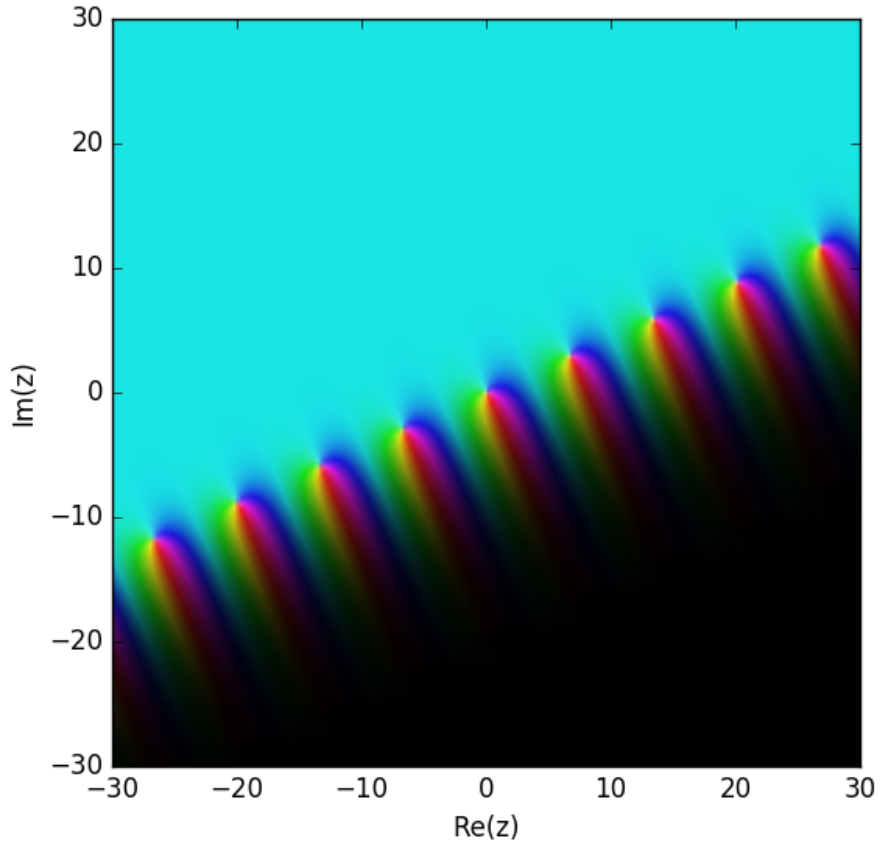| Time scale (of isolated points) | $\mu(t)$ | $\zeta_{\mathbb{T}}(z)=\displaystyle\sum_{k=-\infty}^{\infty} \dfrac{\mu(t_k)}{t_k^z}$ | $\tilde{\zeta}_{\mathbb{T}}(z)=\displaystyle\sum_{k=-\infty}^{\infty} \dfrac{1}{t_k^z}$ |
| $\mathbb{Z}^+=\{1,2,3,\ldots\}$ | 1 | $\displaystyle\sum_{k=1}^{\infty} \dfrac{1}{k^z}=\zeta(z), \mathrm{Re}(z)>1$ (Riemann zeta function) | same because $\mu \equiv 1$ |
| $2^{\mathbb{N}_0}=\{1,2,4,8,\ldots\}$ | t | $\displaystyle\sum_{k=1}^{\infty} \dfrac{2^k}{2^{kz}}=\dfrac{2}{2^z-2}$;$2^{\mathrm{Re}(z)}>2$ | $\displaystyle\sum_{k=0}^{\infty} \dfrac{1}{2^{kz}}=\dfrac{2^z}{2^z-1}; 2^{\mathrm{Re}(z)}>1$ |
| $3^{\mathbb{N}_0}=\{1,3,9,27,\ldots\}$ | 2t | $2\displaystyle\sum_{k=0}^{\infty} \dfrac{3^k}{3^{kz}} =2\dfrac{3^z}{3^z-3}; 2^{\mathrm{Re}(z)}>2$ | $\displaystyle\sum_{k=0}^{\infty} \dfrac{1}{3^{kz}} = \dfrac{3^z}{3^z-1}; 3^{\mathrm{Re}(z)}>1$ |
| $q^{\mathbb{N}_0}=\{1,q,q^2,\ldots\},q>1$ (quantum) | $(q-1)t$ | $(q-1)\displaystyle\sum_{k=0}^{\infty} \dfrac{q^k}{q^{kz}}=(q-1)\dfrac{q^z}{q^z-q}; q^{\mathrm{Re}(z)}>q$ | $\displaystyle\sum_{k=0}^{\infty} \dfrac{1}{q^{kz}}=\dfrac{q^z}{q^z-1}; q^{\mathrm{Re}(z)}>1$ |
$\{1,4,9,16,25,\ldots\}$ (nonzero square integers) | $2\sqrt{t}+1$ | $\displaystyle\sum_{k=1}^{\infty} \dfrac{2k+1}{k^{2z}}; \mathrm{Re}(z)>1$ | $\displaystyle\sum_{k=1}^{\infty} \dfrac{1}{k^{2z}}=\zeta(2z); 2\mathrm{Re}(z)>1$ (Riemann zeta function) |
| $h\mathbb{Z}^+=\{h,2h,3h,\ldots\},h>0$ | h | $h\displaystyle\sum_{k=1}^{\infty} \dfrac{1}{(hk)^z}=h^{1-z}\zeta(z); h^{-z}=0 \mathrm{\hspace{2pt} or \hspace{2pt}} \mathrm{Re}(z)>1$ | $h^{-z}\zeta(z)$ |
| $\{2,3,5,7,\ldots\}=\{p_1,p_2,\ldots\}$ (prime numbers) | $\mu(p_n)=p_{n+1}-p_n$ | $\displaystyle\sum_{k=1}^{\infty} \dfrac{p_{k+1}-p_k}{p_k^z}$ | $\displaystyle\sum_{k=1}^{\infty} \dfrac{1}{p_k^z}$ (prime zeta function)
|
| $\{1,2,3,5,8,13,\ldots\}=\{f_1,f_2,\ldots\}$ (Fibonacci numbers) | | | $\displaystyle\sum_{k=1}^{\infty} \dfrac{1}{f_k^z}=-\dfrac{1}{z} + \zeta_{\mathrm{Fib}}(z)$ (Fibonacci zeta function) |
| $\{\ldots,a_{-2},a_{-1}\}$ (zeros of Airy Ai, $a_{k-1} \lt a_k$) | | | $\displaystyle\sum_{k=1}^{\infty} \dfrac{1}{(a_{-k})^z}$ (almost the Airy zeta function) |
| $\{a_1,a_2,\ldots\}=\{|a_{-1}|,|a_{-2}|,\ldots\}$ | | | $\displaystyle\sum_{k=1}^{\infty} \dfrac{1}{a_k^z}=\zeta_{\mathrm{Ai}}(z)$ (Airy zeta function) |





